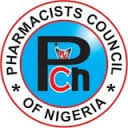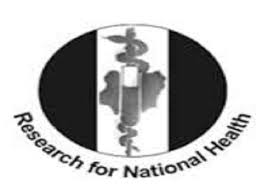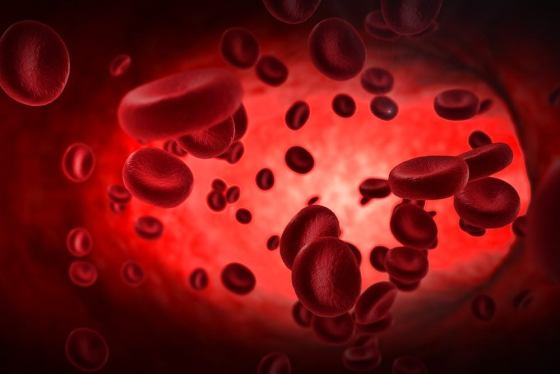ANALYSIS
Text of the lecture by Prof. Adesegun Olayiwola Fatusi, Professor of Public Health and Community Medicine, College of Health Sciences, Obafemi Awolowo University (OAU), Ile-Ife recently.
I FEEL uniquely privileged to stand before this august audience to present today's inaugural lecture, titled: "That We All may Prosper and be in Health: The Primacy, Premises, and Promises of Adolescent and Reproductive Health."
As I prepared this lecture, I could not but reflect on the steps that had taken me to this point in my life and career: From a carefree and adventurous teenager who entered the then University of Ife (now, Obafemi Awolowo University) in 1980 to a professor and Provost of the College of Health Sciences today in the same university. My reflections are perhaps best captured by these words of King David: "Who am I, O Sovereign Lord, and what is my family, that you have brought me this far.... How great you are, O Sovereign Lord! There is no one like you" (2 Sam 7: 18, 22).
Despite the fact that I had graduated with a distinction in Community Health and won the Lawrence Omole Prize for the Best Student in Community Health, I never dreamt of going into the field of Community Medicine as a specialty. But through a series of events, I finally got the conviction that this was God's plan for me and from then on, there was no looking back. Many of my colleagues and friends as well as some of my old teachers were understandably puzzled by my decision to venture into such an unpopular field. The result of a study carried out in the University of Ibadan among medical students of my generation by Professor M. C. Asuzu clearly illustrates how unpopular Community Medicine was then. While only 3% of graduating medical students indicated interest in specializing in Public Health/Community Medicine, no single medical student in the preclinical years indicated such interest.
Had that study been conducted then in Obafemi Awolowo University, the results would probably have been worse: University of Ibadan was, at that time, the base of most of the giants in the field of Public Health and Community Medicine in Nigeria, while Obafemi Awolowo University (OAU) and Obafemi Awolowo University Teaching Hospitals Complex (OAUTHC), Ile-Ife, had only one Community Physician in its employment between 1988 and 1995 - Dr. Isaac O. Abayomi. My generation clearly owes Dr. Abayomi, undisputedly the "Father of Ife Community Health Residency Programme", a huge debt. Without him, my cohort would probably not have had the opportunity for residency training in Ife. Baba Abayomi, as we fondly call him, also supervised my final fellowship research dissertation, with Professor M. C. Asuzu of the University of Ibadan as co-supervisor.
As I journeyed through the training in the field of Public Health and Community Medicine, as if to encourage me and keep me focused, God blessed my endeavour with several success stories. In 1992, I won the Federal Government "one year" abroad award for being the best candidate in the Part I examinations of the Faculty of Public Health of the National Postgraduate Medical College of Nigeria. In 1994, I had a scholarship to pursue Masters degree in Public Health at the renowned Braun School of Public Health & Community Medicine, Hebrew University Hadassah, Jerusalem and graduated with the highest honour (summa cum laude). Step by step, God led me on and showed His faithfulness.
Interestingly, while the field of Public Health has not enjoyed visibility and support in the history of our College of Health Sciences over time, it was one discipline that captured the imaginations of our founding fathers as a platform for impacting the health of the population. The "Ife Philosophy" of training health professionals that was bequeathed to us by our illustrious founding fathers, under the leadership of Professor T. Adesanya Ige Grillo, is unrivalled in Nigeria in terms of the richness of its community-based approach and the eclectic blending of science and services. Our University also has the distinction of having the first Professor of Public Health in sub-Saharan Africa in the person of late Professor Oladele Ajose as our very first Vice-chancellor. Unfortunately, this remarkable piece of history is lost to many even in our academic environment, with the lecture theatre named after him located, with the best of intentions but by accident of history, near the Faculty of Agriculture.
Mr. Vice Chancellor, Sir, I believe that it is pertinent to remind this distinguished audience of the purpose of the inaugural lecture. As great scholars within and outside our university had indicated, including Professor Bamitale Omole in his inaugural lecture in this same hall on 25th May 2010, the inaugural lecture presents the lecturer a platform to do three things: to present a discourse on his/her discipline, discuss his/her works as a scholar, and define his/her scholarship agenda for the future. In that regard, my roadmap for this lecture is as follows:
. My Discipline, My Call - where I will briefly describe the discipline of Public Health/Community Medicine and my primary fields of interest. In that regard, I will discuss the primacy and premises of Reproductive Health, and of Adolescent Health, followed by the Promises that the Adolescent and Reproductive Health fields offer;
. Stewardship of my Scholarship - in which I will discuss some of my contributions to scholarship and academia;
. Defining the Future - where I will highlight my proposed research and related academic agenda for the future.
. My Discipline, My Call
Public Health: An Ancient and Modern Discipline
The Acheson Committee's adaptation of the classical definition by C. E. A. Winslow states that: "Public Health is the science and art of preventing disease, prolonging life and promoting health through organized efforts of society". Community Medicine and Community Health are two terms that are often used in discourse on the Public Health field, just as I have done already in this lecture. Not unusually, people often ask the question: Are these the same terms/fields, or how are they connected?
I will briefly explain these inter-related terms, particularly as the last Inaugural Lecture by a Community Physician in our university was by Prof. Taiwo Daramola, about 33 years ago. Before him, Professor Ade Adeniyi-Jones, the foundation Head of our Department, was the only other Community Physician who had given an inaugural lecture in this University (that was on 26 January 1978). May I quickly add that two other great academics from our Department of Community Health have also given inaugural lectures. These are Professors Ebenezer Ojofeitimi and Delana Adelekan, both of whom are outstanding public health nutritionists.
Public Health is the umbrella discipline that encompasses the wide group of professionals working to promote the health of the public. Community Health is an aspect of Public Health that focuses on providing preventive, promotive, curative and rehabilitative health care to people in defined geographical areas. Community Medicine, on the one hand, can be regarded an aspect of Community Health that is the exclusive preserve of physicians within the context of public health practice. On the other hand, it has been defined as "a branch of medicine concerned with populations or groups rather than with individual patients, requiring special knowledge of epidemiology, organisation and evaluation of medical care, and the medical aspects of health service administration". Thus, Community Medicine is nested within both Public Health and Clinical Medicine domains, and can be rightly regarded as a vital bridge between the two.
My areas of primary interest within the discipline of Public Health and Community Medicine are Adolescent Health and Reproductive Health. Interestingly, both Adolescent Health and Reproductive Health are relatively new to the Public Health domain. At the time I graduated from the medical school in 1987, none of these two fields was a distinct part of the medical curriculum in Nigeria and indeed, in most parts of the world. By the time I completed my specialist training and became a Fellow of the West African College of Physicians in 1995, Reproductive Health had just emerged on the global agenda but it was not yet a focus of most public health training programmes. By September 2002, when I returned to full academic life in this university, Adolescent Health had not made it into the curricula of our College of Health Sciences or even the specialist training of the Nigerian and West African Postgraduate Medical Colleges.

Reproductive Health: The Primacy and Premises
The field of "Reproductive health" as it is known today, originated at the International Conference on Population and Development (ICPD), which held in Cairo, Egypt, in September 1994. The Programme of Action of the ICPD defines Reproductive Health as: ... . a state of complete physical, mental and social well-being and not merely the absence of disease or infirmity, in all matter relating to the reproductive system and to its functions and processes".i
Reproductive Health has a life-cycle approach, and broadens the agenda of Maternal and Child Health, Family Planning and relevant population programmes to involve previously neglected groups such as young people, men, and refugees; as well as cover neglected issues such as gender-based violence.
Today, twenty years after the ICPD, the world and our nation, Nigeria, are still faced with huge burden of sexual and reproductive health challenges. Sexual and reproductive health problems account for about a fifth of the total global burden of disease and a third of the disease burden among women of reproductive age. An estimated 222 million women worldwide has unmet needs for modern contraceptives, with consequences including 54 million unintended pregnancies. Globally, more than one quarter of a million mothers (287,000) die in childbirth and from pregnancy-related complications annually. Nigeria's sexual and reproductive health indices are also poor, with high level of risky sexual behaviour, low contraceptive use, high level of unsafe abortion, maternal morbidity, and maternal mortality (as can be seen on the slide presented).
Adolescent Health: The Primacy and Premises
Adolescence is best defined as 'a period of transition', in which 'although no longer considered a child, the individual is not considered an adult'. Adolescents constitute a very heterogeneous group and defining them strictly in terms of age has several limitations. Yet for practical programming purposes, adolescence is defined as the second decade of life (i.e. 10-19 years) by the United Nations.
The word "adolescence" actually has a Latin origin (adolescere) and did not exist in the English vocabulary before the 15th century. Adolescence, as we have it today, is a fairly recent phenomenon, and is a creation of important changes in the society, particularly education, industrialisation, and urbanization. Historically, the work of Stanley Hall, published in 1904, is acclaimed to have popularised the use of the term "adolescent". A close examination of several ancient writings and cultures, however, leaves one in no doubt that the concept of "young people", which certainly includes the group we now describe as adolescents, has always been recognized in human societies. In his classic work, "The Republic", Plato (427-347BC) remarked that "The son feels equal to the father, he has no respect for his parents anymore... all he wants to be is free... students insult their teachers... and on top of this situation, in the name of liberty and equality, sex is everywhere". Aristotle (384 - 322BC) noted that the "youth are heated by nature as drunken men by wine... ".
Such stereotypical statements, which tend "to pathologise and homogenise adolescence", are over-generalisations and are misleading regarding the persons and lives of most young people. What my studies and work have clearly taught me is that adolescents are the greatest of all human groups. As Stanley Hall noted: "adolescence is a new birth, for the higher and completely human traits are now born ... . These years are the best decade of life. No age is so responsive to all the best and wisest human endeavor". Adolescence is, indeed, a time of great capacities, though accompanied with its unique struggles and challenges. For many parents and adults, adolescents are simply puzzles and enigma! Interestingly, as David Bainbridge argued, the very nature of adolescents is such that they "are always destined to change the world into something that becomes increasingly alien" to their parents and other adults As the excerpts from a brilliant poem (titled "Me, Myself and I") written by a 15-year old Nigerian female teenager, illustrates, the adolescent have two dimensions of struggles: coping with pubertal changes, and coping with the changing nature and dynamics of relationships - with peers, members of the opposite sex, parents, and other adults.
ME, MYSELF AND I
A few years ago, I was a child
Played with everything and everyone
Except for boys, they just irritated me
I seemed to be the darling of the family
Life seemed to be so much fun...
My friends were "family" friends
No one ever judged me or them so harshly
I was "wrong" for every wrong
And I obeyed every instruction without a question
... Now that I am an adolescent
I relate with "my kind of people"
Not only do I get date invitations from guys,
Most of them are my very good friends
I seem to be deliberately picked on by my family
Life is so frustrating and annoying
Except when I'm with my pals and gals or on face book
!'ve got new friends now; like a clique
They get the judgement of all and sundry
I am "wrong" for every wrong
Even without explanation
I am blamed for everything
It's still me, but are there two different mes?
I am myself, but has myself evolved?
I am who I am but am I who I am?
One of the contemporary issues in adolescent health is that of brain development. Among others, we now know that the adolescent brain is a work in progress - as brain development goes on throughout adolescence. Two of the interesting phenomena in the adolescent brain development are: (i) the ongoing development of the prefrontal cortex - the part of the brain that coordinates things like planning, organization, and modulation of mood; and (ii) the hypersensitivity of the limbic system (which is, the "reward centre" of the brain). During my class teachings, I often draw on the example of car manufacturing to illustrate this phenomena. We may liken the limbic system to an accelerator and the pre-frontal cortex as the break of the car. Then imagine a car, with hypersensitive accelerator and slow acting break! Thus, although our knowledge of brain development is incomplete at present, there are increasing arguments that many of the behaviours associated with adolescents may have their root in their brain. To ensure that this unique car travel safely, the supremely-wise manufacturer of the adolescent brain put in place speed auto-regulator and advance intelligent signal recognition in the form of parents, other adults, authority figures and social systems.
With a population of about 1.2 billion, the world currently has the largest cohort of adolescents ever. While childhood mortality rate has continued to decline since the mid-1990s, mortality rate among young people has improved only marginally, and in some cases, not at all. Currently, adolescents and youths (age 10-24 years) account for 15.5% of the global disease burden. In 2012 alone, about 1.3 million adolescents died worldwide, mostly from preventable or treatable causes. The risk for death among young people is higher in Africa than in any other region. Overall, as my mentor, Professor Robert Blum has aptly noted, "Young people are not as healthy as they seem": painfully, "What distinguishes the causes of death of young people is that most deaths have behavioural causes exacerbated by national policy or failures of health service delivery systems, or both".
Adolescent Health and Reproductive Health: The Promises
It is clear that we need to strategically invest in adolescent health in order to reduce the high level of preventable morbidity and mortality in the age group, to build on the health gains made in childhood, and to lay the foundation for healthy adult life. Two-thirds of premature deaths and one-third of the total disease burden in adults are associated with behaviours acquired in adolescence. In addition, investment in adolescent health, as the World Bank has argued, promotes economic development and the realisation of "Demographic dividend".
Investment in family planning, which is one of the components of Reproductive Health, also improves the potentials for achieving economic dividends, as well as positively impacting the health and well-being of individuals and populations. For example, if all women who desired family planning between 2005 and 2015 had their needs met, Nigeria would have averted 3.5 million unwanted pregnancies, one million under-5 deaths, and over 18,000 maternal deaths. Investment in maternal health, another component of RH, will considerably improve the health of adolescents as some of their health determinants have their roots in pre-pregnancy and pregnancy states of their mothers. Thus, investment in Reproductive Health greatly compliments and enhances the results of investments in adolescent health.
Mr. Vice-Chancellor, Sir, distinguished audience, while I am not an historian, I am greatly fascinated by history. I have been privileged to have taken active part in the "birth and nurturing" of adolescent health and reproductive health fields in Nigeria. At this juncture, permit me to share with you some undocumented historical trajectory of Adolescent and Reproductive Health development in Nigeria. My foray into Reproductive Health (RH) and Adolescent Health (AHD) actually commenced with my fortuitous engagement with UNFPA as a Technical adviser in its Nigerian programme from April 1996 to September 2001.
As many in this hall may probably recall, Nigeria experienced some political turbulence following the annulment of the June 12, 1993 presidential election. Subsequently, the United States Government withdrew its aid to Nigeria's public sector activities. Unfortunately, Nigeria's Maternal and Child Health/Family Planning programme was, at that time, largely dependent on the support of the United States Agency for International (USAID) Thus, USAID withdrawal of its support led to the virtual collapse of Nigeria's Maternal and Child Health and Family Planning programme. Fortunately, the United Nations Population Fund (UNFPA) office in Nigeria rose up to the challenge by establishing Maternal and Child Health/Family Planning Projects in five states of Nigeria in 1995. I served UNFPA in various capacities between 1996 and 2001, one of which was as the first Technical Adviser to the new National Reproductive Health sub-programme. One of the component projects of the sub-programme was named "Operationalising Sustainable Reproductive Health programme in Nigeria". This project had the mandate "to establish sustainable platform for reproductive health as a national priority in Nigeria". What an exciting challenge that was! In the space of 18 months, our team worked frantically to actualise this mandate. Under my technical leadership, the project developed Nigeria's first National Reproductive Health Policy. We also developed the National Reproductive Health Curriculum for Nurses, and established the National Reproductive Health Working Group. Those steps constituted the foundation for Nigeria's national reproductive health agenda. Between 2000 and 2001, we also developed several new service packages, protocols, materials, and built human capacity to provide the much needed resources for taking Nigeria RH agenda forward.
The platform provided by the National Conference on Adolescent Reproductive Health in Nigeria held in January 1999, with UNFPA as a major partner, resulted in the development of Nigeria's first National Strategic Framework on Adolescent Reproductive Health. That document was developed by a team of five, including my humble self. That framework and the National Reproductive Health Policy were both approved by the National Council of Health in May 2001. The project also undertook the development of the Clinical Service Protocol and the National Training Manual on Adolescent Health.
However, while my work with UNFPA introduced me to programming dynamics in Adolescent Health, it was really my experience as a Packard-Gates Fellow in Population Leadership at the University of Washington, Seattle, USA, between 2001 and 2002 that shaped my academic thoughts in Adolescent Health.
Stewardship of My Scholarship
One of the greatest influences on my worldview of scholarship and academia is the late American educationist, Ernest Boyer, who posits in his highly influential work, Scholarship reconsidered: Priorities of the professoriate, that academia is "an intellectual process facilitated but unbounded by the ivory tower". He argued that the work of the professoriate consists of four separate, yet overlapping, functions: scholarship of discovery; scholarship of integration; scholarship of application; and, scholarship of teaching His perspective reinforces my long-held desire never to be a "theoretical" academic. Indeed, I strongly believe that a Public Health practitioner who is not actively involved in shaping public health policies and actions must be as rare as a surgeon who does not go to the theatre. In line with that belief, I have been actively involved, nationally and internationally, with policy formulation and programme development informed largely by the findings of my over 100 publications, with about 75 in peer review journals. My team's research programmes contributed the highest proportion (38.9%) of the university external research funds between 2006 and 2011, according to the "Status of Research in Obafemi Awolowo University" published by the University Research Committee in 2011. Between 2011 and 2014, by God's grace, we generated even more research funds for the University than we did in 2006-2010 period. My research work has impacted heavily on two areas of policy formulation and programme development, namely maternal health services, and adolescent sexual and reproductive health.
Maternal Health Services
Nigeria ranks as the country with the second highest maternal death burden in the world, with about 40,000 maternal deaths annually. With a population of about 170 million, Nigeria contributes only about 2 percent of the global population, but about 14% of the global maternal deaths. Nigeria's maternal mortality ratio is put at between 576Error! Bookmark not defined. and 630 maternal deaths per 100,000 live births compared to the world average of 210/100,000 live births.
My research had tried to investigate why Nigeria's mortality rate is so high. We know that most maternal deaths occur at about the time of birth and these deaths cannot be accurately predicted in advance. As such, what is critical is the capacity for rapid recognition and response to pregnancy-related complications. The success of maternal mortality reduction efforts is, therefore, hinged on the competency of our health care facilities to provide quality services.
Globally, facilities that have the required capacity to address maternal complications are classified as "basic" and the "comprehensive" obstetric care facilities. The basic facilities have seven signal functions, while the comprehensive facilities have two additional functions - ability to transfuse a woman with safe blood and the ability to carry out relevant surgeries such as Caesarean section (As shown on the slide). To reduce maternal deaths, we need to have adequate number of facilities that meet emergency obstetric care criteria, and pregnant women must be able to access such facilities readily and utilize them appropriately. The only national study conducted to assess the status of maternal health facilities was carried in 2003 and led by my humble self. We found that only 18.5% of the 4,503 health facilities surveyed across 12 states met the essential obstetric care criteria. Among the 12 states surveyed, only Lagos State met the standard of 4 basic EOC facilities per 500,000 population inclusive of both public and private health facilities.
In another study focusing specifically on Ife South Local Government Area (LGA), and led by Dr. Kayode Ijadunola, our team found only one private facility out of the 26 facilities assessed to have met the EOC criteria! Almost half of all the facilities (46%) were manned by unskilled health attendants. A more recent study focusing on Osun State in 2012-2013 still found that most facilities lack basic maternal care equipment.
We also found that most maternal facilities in Nigeria are manned by Community Health Extension Workers (CHEWs) rather than by professional nurses who have the skills to handle pregnancy-related emergencies. Faced with this scenario, our research team sought to find out if there was a practical way that skills of Community Health Extension Workers can be improved to achieve better maternal and newborn health outcomes. Our intervention study carried out in Ife Central LGA, showed that CHEWs could be effectively trained to use the partograph with satisfactory results. That resulted in positive impact on maternal and newborn health outcomes.
ABUJA: Training Schedule for Basic Life Support BLS, Pediatric Advanced Life Support (PALS), Advanced Cardiovascular Life Support ACLS, First Aid, CPR, AED
PORTHARCOURT: Training Schedule for Basic Life Support BLS, Pediatric Advanced Life Support (PALS), Advanced Cardiovascular Life Support ACLS, First Aid, CPR, AED
LAGOS: Training Schedule for Basic Life Support BLS, Pediatric Advanced Life Support (PALS), Advanced Cardiovascular Life Support ACLS, First Aid, CPR, AED





